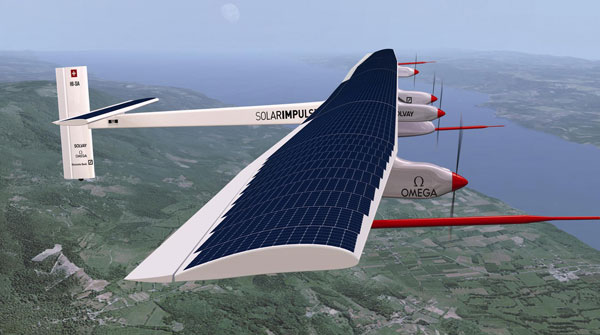A child is born every day in Nigeria. After the birth, the mother is expected to immunise the child against some preventable childhood diseases such as polio.

Polio is an infectious disease that is caused by a virus which lives in the throat and intestinal tract of an infected person. According to Dr. Ahmed Abduluahab, the Deputy Programme Manager for the PRRIN-MNCH Programme, polio is most often transmitted from the stool of an infected person to the mouth. It can also be spread through oral or nasal secretions. PRRIN stands for Partnership for Reviving Routine Immunisation in Northern Nigeria.
Polio infection can lead to irreversible paralysis or death.
In 1988, the World Health Organisation (WHO) stepped up efforts to completely eradicate polio in the world. Since then polio cases have decreased by over 99 percent worldwide. Currently, there are only three countries in the world where polio still exists. Nigeria is one of them. The other two are Afghanistan and Pakistan.
However Dr. Ahmed Abduluahab says polio should not exist in Nigeria as it is preventable with the para-polio vaccine. According to the organisation Path, in Northern Nigeria barely one in 10 children receives all of their routine vaccines. One of such is the polio vaccine. Four doses of the live oral polio vaccine are all that is needed to protect a child from the effects of polio. Unfortunately, too few children in Northern Nigeria receive even a single dose of vaccine. The WHO says polio is not treatable, that the polio vaccine is the only way to prevent a child from being affected by polio which mainly affects children under five years of age.
Many have wondered why the polio virus still exists in Nigeria despite extensive efforts to eradicate the virus in the country. Some have blamed poor skills of some vaccinators and poor storage of vaccines has also been mentioned as reasons.
Mohammed Adamu, a victim of the polio virus from Yobe State in Nigeria, says the mistake of a polio vaccinator cost him the use of his legs. According to him, he was told that when he was a baby his mother tried to get him vaccinated against the polio virus. But the vaccinator made a costly mistake which lead to him being paralysed by the polio virus and handicapped.
But Dr. Ahmed Abduluahab says polio vaccination cannot cause paralysis. According to him, polio infection can only occur after vaccination if the vaccine loses its potency due to poor storage. Nevertheless, he says there is a new attachment to the vials of the polio vaccine called Vial Monitor or VVM which helps to indicate when a vaccine has lost its potency due to over exposure to high temperature. He says once this is detected, the vaccine will not be administered.
Mohammed, who became paralysed from a polio infection, says although he grew up paralysed, he still wishes he had the full use of his legs as he faces challenges on a daily basis that having legs would have made easier to cope with. He is in his 30s but cannot walk. Today, he is only able to move from one place to the other using his locally made wheelchair or skateboard. He provides for his financial needs by charging people’s phones, selling recharge cards and downloaded music.
Although he struggles hard to survive, Mohammed still counts himself fortunate in comparison to other polio victims who have resorted to begging on the streets in order to be able to feed. He wants polio eradicated so that beggars will get off the streets and more people will not get infected. If polio eradication fails, much of the money spent will have been wasted and if it succeeds, the world will be polio free.
Dr. Ahmed Abduluahab also blames it on what is called miss children. He says: “Because of the challenges of miss children, there are always populations or groups of children that are not immunised against the polio virus.”
He says a situation of miss children exists due to non-compliance. Some parents, he says, “for various reasons hide their children or refuse to bring their children out to get immunised and as long as people who don’t believe in polio vaccination exist, polio will continue in the country.”
Other reasons have been given why polio still persist in the country. Dr. Ben Anyene, Chairman, Health Reform Foundation of Nigeria, says the primary health system in the country is not effective.
He says: “If an effective health care system exists in the country where the vaccines are available when they are needed, polio outbreaks would not occur in the country. This would lead to a situation where people can go to health centres and access all the necessary vaccines for immunisation.”
Rumors about the safety of the polio vaccine have also hampered the eradication of polio in the country. In July 2003 for instance, the polio immunisation campaign was discontinued in some states in Northern Nigeria because some religious and political leaders alleged the vaccines were deliberately contaminated with anti-fertility agents and the HIV virus. In 2004, vaccinations resumed after tests showed the vaccine was not contaminated with estrogen, anti-fertility agents or HIV. Insecurity in some states in Northern Nigeria has also been blamed. In 2013, nine polio vaccinators in Kano were killed by gunmen and their clinics set on fire as they vaccinated children against the polio virus.
Dr. Ben Anyene of Health Reform Foundation of Nigeria says polio can only be eradicated in Nigeria if the primary health care systems in the Local Government Areas are functional and polio eradication stems from the Local Government Areas and not Federal.
He says: “The Federal Level does not have Human Resources and the capacity to tackle polio at the community or gatekeeper’s level. If routine immunisation is properly strengthened and given where it is supposed to be given – which is at the primary health centre and people access it, vaccinators will not need to go visiting people and wasting energy and resources.”
Routine immunisation is a scheme where every child is given certain vaccines to prevent them against vaccine preventable diseases.
The polio eradication initiative has four components – the routine immunisation, the campaign, the surveillance and mop up campaigns.
According to Dr. Ahmed Abduluahab of PRRIN-MNCH the routine immunisation is the most important arm of all four components of the polio eradication initiative. He says with this realisation, the Nigerian Government is working to strengthen the routine immunisation.
Parents and health workers are advised to also intensify efforts to eradicate polio in Nigeria and make Nigeria one more country that is polio free. Children requiring vaccination should be vaccinated. According to the WHO, for “as long as a single child remains infected, children in all countries are at risk of contracting polio. Failure to eradicate polio from Afghanistan, Pakistan and Nigeria could result in as many as 200,000 new cases every year, within 10 years, all over the world.
By Chinyere Opia


















